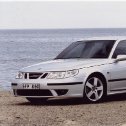Solar Powered Generator
-
Recently Browsing 0 members
- No registered users viewing this page.
-
Topics
-
-
Popular Contributors
-
-
Latest posts...
-
41
Armpit rash?
Two years, two months, 10 days... At four months, I still couldn't get out of bed. -
41
Report Thai Booze Rules Set for Reform as New Laws Under Review
Can you tell me what this new "Maow Visa" is please? I've done a search on Google but nothing comes up other than chatter about "O" visas. -
22
Report British Teen Contracts Deadly Scrub Typhus After Thailand Trip
The point about the NHS is the treatment is free - dependent on the urgency of the situation, you may have to wait a while. In Thailand, I agree that you can get seen by a doctor very quickly, but any subsequent treatment can be very expensive! -
31
Be aware of this even if you have Health insurance cover!!!
I haven't seen a general requirement to inform an insurer of changes in one's health status absent making a claim, but it is possible that some insurers do. -
25
No male Thai friends after years of living here? Help for the lonely farangs left out.
In Pattaya it's easier to find normal farang, the rest you can avoid. I cycle with Thai guys sometimes but you don't really connect with them because of the language -
15
Ukraine Branded and Broken: Ukrainian POW Recounts Unimaginable Russian Torture
So, as usual, you have nothing to offer except the appearance of a thoroughly unpleasant person. What a sad way to live your life.
-
-
Popular in The Pub






.thumb.jpeg.d2d19a66404642fd9ff62d6262fd153e.jpeg)









Recommended Posts
Create an account or sign in to comment
You need to be a member in order to leave a comment
Create an account
Sign up for a new account in our community. It's easy!
Register a new accountSign in
Already have an account? Sign in here.
Sign In Now